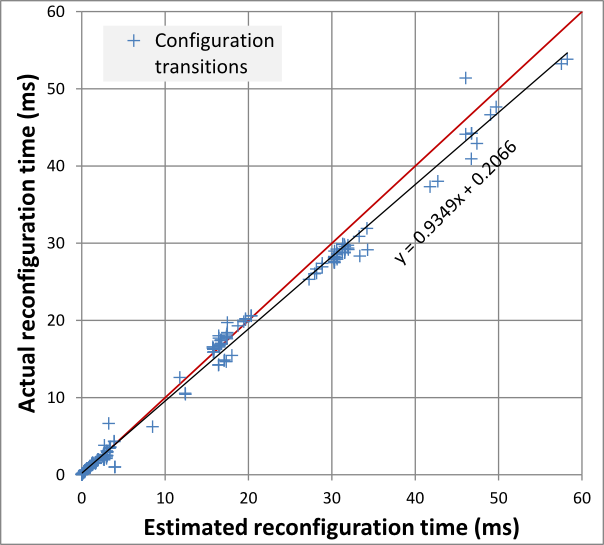Section: New Results
Model-Driven Engineering for Activity Recognition Systems
Participants : Sabine Moisan, Jean-Paul Rigault, Luis Emiliano Sanchez.
We continue to explore the applicability of model driven engineering (MDE) to activity recognition systems. Of course, setting up a complete methodology is a long term objective.
Feature Models
Features models are convenient representations of system variability but the drawback is a risk of combinatorial explosion of the number of possible configurations. Hence we have extended feature models with quality attributes and associated metrics to facilitate the choice of an optimal configuration, at deployment as well as at run time. We have proposed several strategies and heuristics offering different properties regarding optimality of results and execution efficiency [41] .
This year we have conducted further experiments to evaluate the optimization algorithm and the metrics. In particular, we studied the prediction accuracy of the additive metrics for estimating two properties of interest: frame processing time and reconfiguration time. The goal was to compare predicted against measured properties of a running system. We used a simple video chain implemented with OpenCV components (acquisition, filtering, various detections, and visualisation) and we tested it on a video sample of 48s (i.e., about 1350 frames). We defined a feature model for this chain, which exhibits 14 valid configurations.
We first computed the properties of each component in isolation (based on a set of repetitive measurements), then we measured the actual frame processing time and reconfiguration time, and finally we compared the estimated and actual values.
|
Figure 36 displays the results for reconfiguration time. In our experiment, we have a total of 210 transitions over a set of 15 valid configurations (14 system configuration + one for system shutdown). For frame processing time, we achieved an accuracy of 96.7% on average, and for reconfiguration time the accuracy was between 90.5% and 87.6%.
Introducing metrics in feature models is a precious help to reduce the huge set of valid configurations after a dynamic context change and to provide a real time selection of an appropriate running configuration. However, more evaluation remains to be done on other runtime properties and for other video chains.
Configuration Adaptation at Run Time
To react to environment changes we favor the “model at run-time” approach. Our current prototype ressorts to tools and technologies which were readily available. This made possible a proof of concepts. However, this induces several redundant representations of the same data, consistency problems, coexistence of several formalisms or programming languages, and superfluous back and forth inter-module communications. This year we started to design a more homogeneous and better integrated prototype. The two key points are, first, a component management framework, second, a feature model managemen tool.
This year, we have continued to develop our OSGi-like component framework, but more adapted to real time and compatible with our extended feature models. Concerning feature model management, we started to study a FAMILIAR replacement that integrates smoothly into the C++ video analysis chain instead of being a separate (Java) tool. Moreover, the new tool should cope with our feature extensions (e.g., quality attributes).


